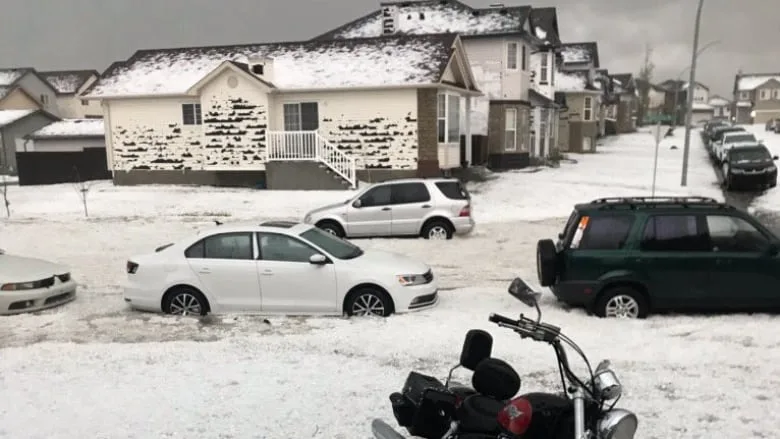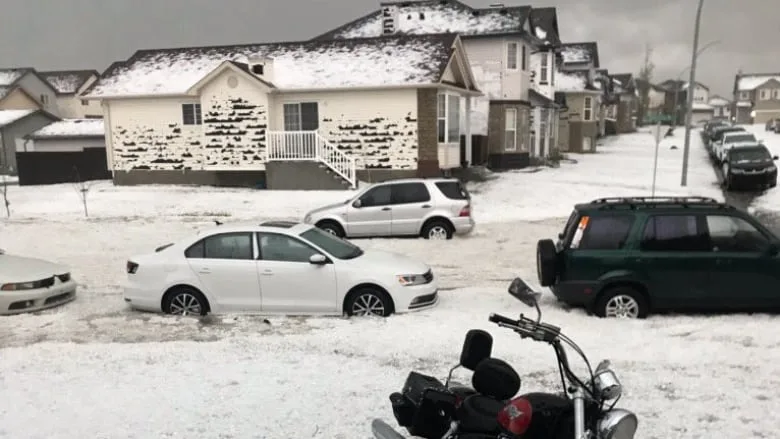
$2.4-billion price tag for natural disasters in Canada in 2020
More than half of 2020's insured damages from weather disasters came from a single hailstorm in Alberta, whose $1.3-billion price tag made it the costliest in Canadian history.
Catastrophic weather disasters cost Canadians around $2.4 billion in insured losses in 2020—the fourth costliest year on record so far.
More than 80 per cent of that amount comes from just three events, all of them in Alberta. The list is topped by the June 13th storm that did $1.3 billion in hail damage in the Calgary area, the fourth costliest disaster in Canada’s history, and the country’s costliest hailstorm.
Springtime flooding in Fort McMurray, at $562 million, and a series of summer storms in central and southern Alberta that together did $221 million in damages, round out the top three. Outside of Alberta, a January rain and snowstorm in southern Ontario and Quebec did $98 million in damage, and a November 15th windstorm in Ontario did $88 million in damage and produced at least one confirmed tornado.
That’s according to Catastrophe Indices and Quantification (CatIQ), which compiles data on losses from catastrophic severe weather events in Canada. CatIQ managing director, Laura Twidle, described Alberta’s dominance of last year’s catastrophic losses as something of a return to form for the province.
“Historically, Alberta sits at the top of the list when it comes to annual catastrophic loss, however, Ontario and Quebec have led the way the past few years due to impactful spring flooding and intense shoulder-season windstorms,” Twidle told The Weather Network.

More than half of 2020's insured losses came from a single June hailstorm in Alberta that did $1.3 billion in damages. File photo.
The $2.4-billion only includes disasters above a certain dollar threshold for insured losses. For CatIQ, that includes ‘catastrophic’ events over $25 million, which Twidle says typically occur in urban areas, and ‘notable’ events in the $10-25 million range, that normally happen in rural or a mix of rural and urban areas, depending on the intensity.
2020’s fourth-place tally was less than half of the all-time record of $5.2 billion set in 2016. That milestone was dominated by the Fort McMurray fire, which forced the evacuation of 88,000 people, destroyed or damaged 2,500 structures, and resulted in 60,000 claims totalling a staggering $3.9 billion.
Still, the number and frequency of billion-dollar disasters have only gone up over the past few decades, as have the average yearly damage totals. Out of the top-10 costliest years for insured damages, all but two were within the last 10 years, and only one happened before the 21st Century: The 1998 ice storm in Ontario and Quebec, whose $2.5 billion total makes it the third single most damaging event on record.
When asked, Twidle said the trend among disasters that don’t meet the catastrophic threshold, but which would still cause damage to home and business owners, was likely on the rise as well.
“Yes, I would expect lower-impact events to also increase the way we have seen catastrophes increase, due to the frequency of extreme events increasing, further development in cities, and urban sprawl,” she said.
The Insurance Bureau of Canada (IBC), which relies on figures from CatIQ, noted earlier this week that Canadian taxpayers and governments pay out “much more” than the value of privately insured claims to repair public infrastructure damaged in extreme weather events, and those costs have also been increasing.
WEATHER DISASTERS ARE COSTING CANADIANS MORE AND MORE DUE TO CLIMATE CHANGE
“While acknowledging the importance of a resilient recovery, the federal government lacks any national plan to protect Canadians from floods, fires, windstorms and hail,” Craig Stewart, the IBC’s vice-president for federal affairs, said in a release. “For all of its work on reducing future climate threats, too little attention is being paid to the losses Canadians are facing today due to past inaction.”
As disaster frequency and insurance payouts rise, there is a risk that insurance coverage may be prohibitively expensive in some areas. As a way of getting ahead of that trend, both CatIQ’s Twidle and the IBC point to a federal task force that includes governments and insurers, launched in late 2020, whose mandate is to create a national flood insurance program for at-risk homeowners, as well as a plan to help homeowners who may need to relocate entirely.












